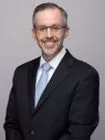The U.S. Patent and Trademark Office (USPTO) issued a final rule in the Federal Register on November 16, 2023, to create a separate design patent practitioner bar for practice in design patent proceedings only.
Importantly, according to the USPTO, the new design patent practitioner bar "does not impact the ability of those already registered to practice in any patent matters before the USPTO to continue to practice in any patent matters, including design patent matters, before the Office."
The USPTO acknowledged concerns in the practitioner community "that the division of the bar would cause confusion within the public, increase the cost of identifying appropriate counsel, add significant administrative and policing costs to the USPTO, and increase the risk of potential malpractice and ethical concerns." In response, the USPTO noted that "[c]onfusion by the public is avoided in part by allowing design patent practitioners to indicate their designation as a "design patent attorney" or "design patent agent," and requiring such practitioners to indicate "design" when they are signing USPTO documents." The USPTO also indicated that to "ensure applicants to the design patent practitioner bar have the requisite knowledge of USPTO rules and regulations, the USPTO also requires them to take and pass the current registration examination" (in addition to undergoing and passing a moral character evaluation).
Nevertheless, the USPTO emphasized that "admitted design patent practitioners may practice in design patent matters only" and reminded the patent community that per ethics Rule 11.101, "all practitioners, including design patent practitioners, are requested to provide competent representation to their clients. This includes properly informing their clients of practice limitations."
According to the USPTO, "design patent practitioners will receive a particular registration number series to distinguish them from those practitioners who are authorized to practice in all patent matters." To further aid in making this distinction, the USPTO amended Rule 1.4(d)(1) to "to add the requirement that a design patent practitioner indicate their design patent practitioner status by placing the word "design" (in any format) adjacent to their handwritten signature" on documents filed with the Office. The USPTO also amended Rule 1.4(d)(2)(ii) "to add the requirement that a design patent practitioner indicate their design patent practitioner status by placing the word "design" (in any format) adjacent to the last forward slash of their S-signature" on documents filed with the Office.
However, the USPTO cautioned that practitioners must be careful when filing a Power of Attorney that names those practitioners that are associated with a USPTO Customer Number, noting that "[i]f a design practitioner is associated with a customer number, that customer number cannot be used to establish power of attorney in a utility or plant application. This applies even if a practitioner that is authorized to practice before the Office in all patent matters is also associated with that same customer number."
Specific to design patent practitioners, the USPTO noted that "a registered practitioner under [Rule] 11.6(d) who is an attorney may use the designation "Design Patent Attorney"; and a registered practitioner under [Rule] 11.6(d) who is not an attorney (i.e., who is an agent) may use the designation "Design Patent Agent."" However, a practitioner registered to practice in utility patent, design patent, and plant patent matters "who is an attorney may use the designation "Patents," "Patent Attorney," "Patent Lawyer," "Registered Patent Attorney," or a substantially similar designation; a registered practitioner under § 11.6(b) who is not an attorney may use the designation "Patents," "Patent Agent," "Registered Patent Agent," or a substantially similar designation."
Finally, according to the USPTO, "[e]xpanding the admission criteria of the patent bar encourages broader participation and keeps up with the ever-evolving technology and related teachings that qualify someone to practice before the USPTO. The Manual of Patent Examining Procedure will be updated in accordance with this final rule in due course."
The Notice is published in the Federal Register here: https://www.govinfo.gov/content/pkg/FR-2023-11-16/pdf/2023-25234.pdf
The content of this article is intended to provide a general guide to the subject matter. Specialist advice should be sought about your specific circumstances.


